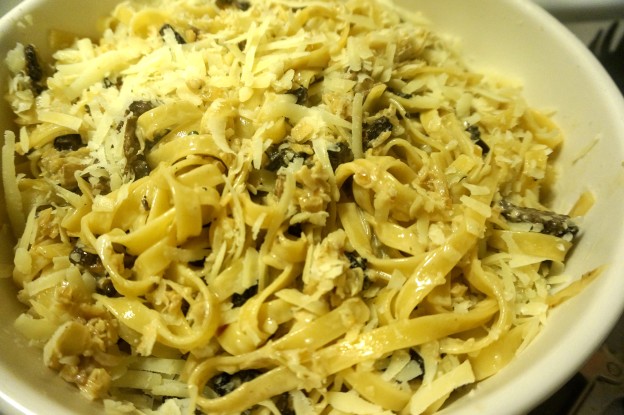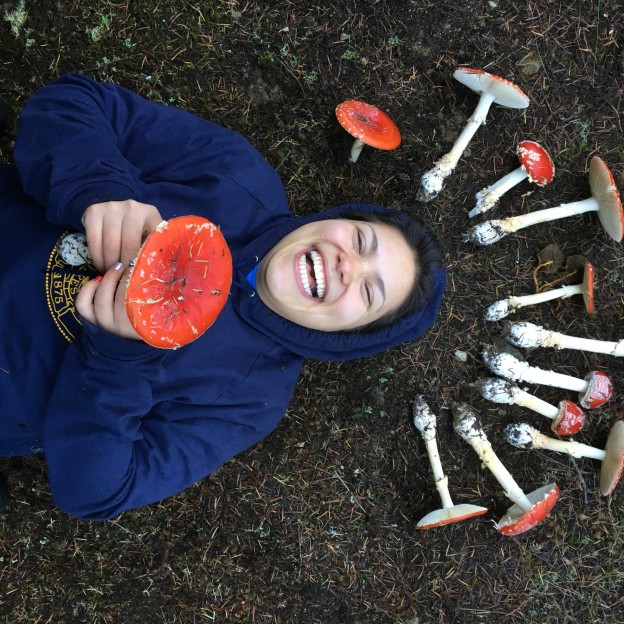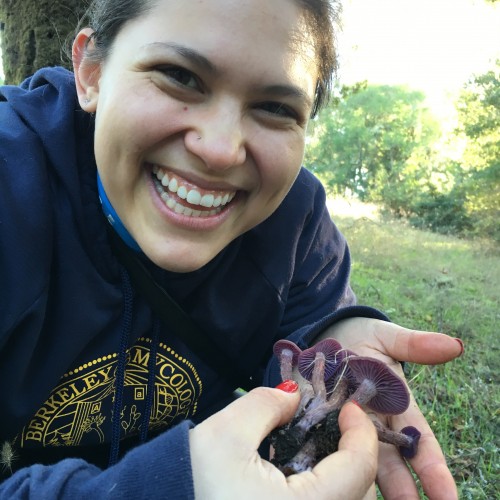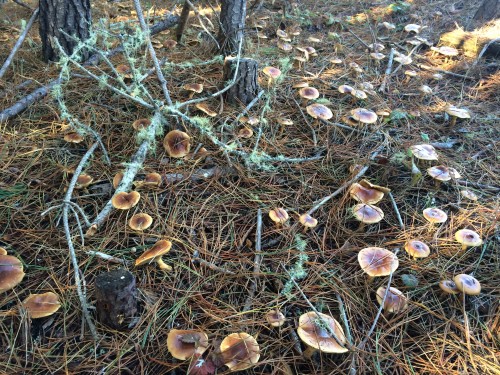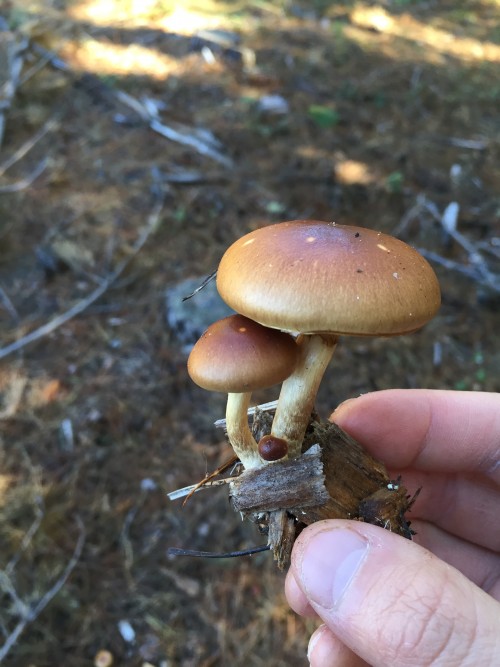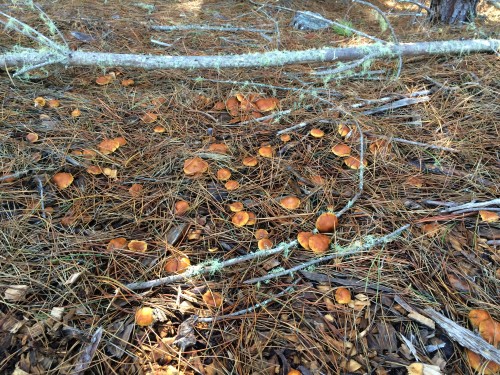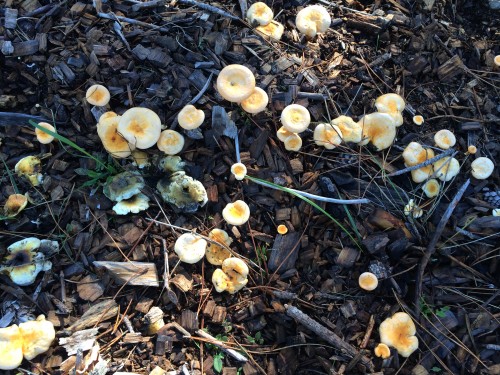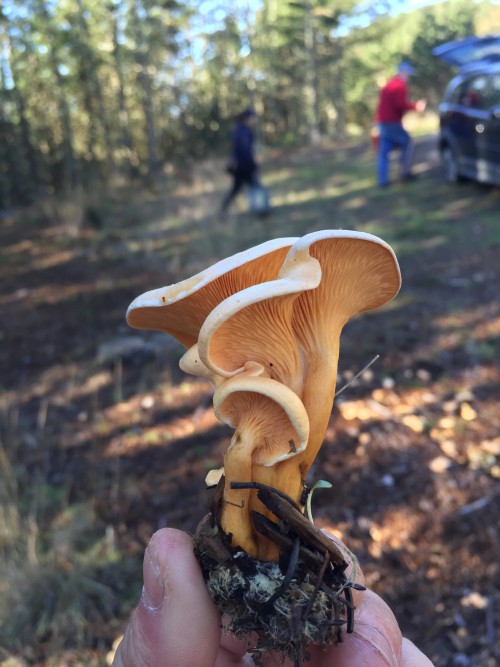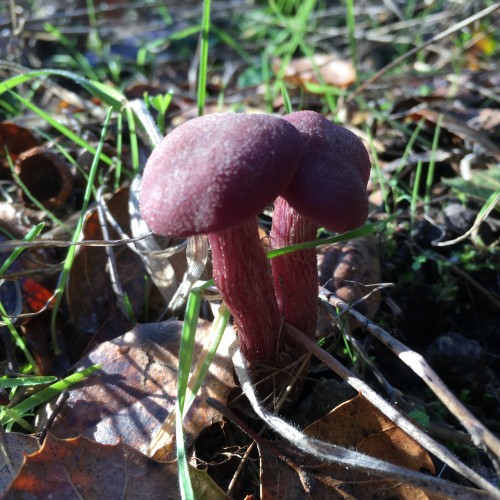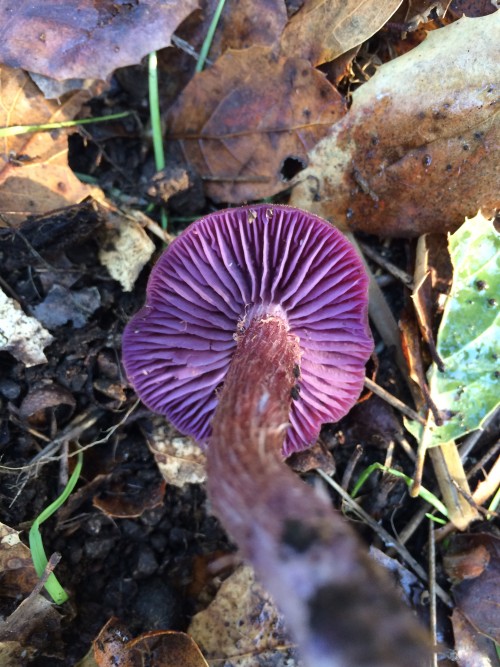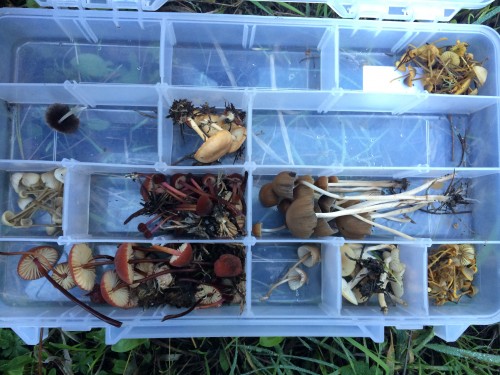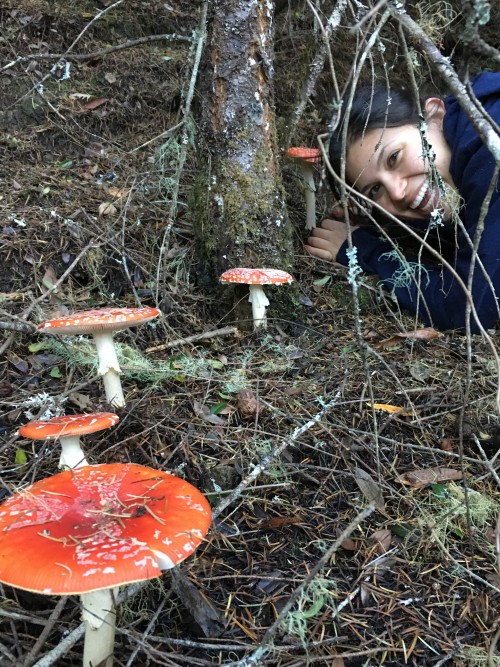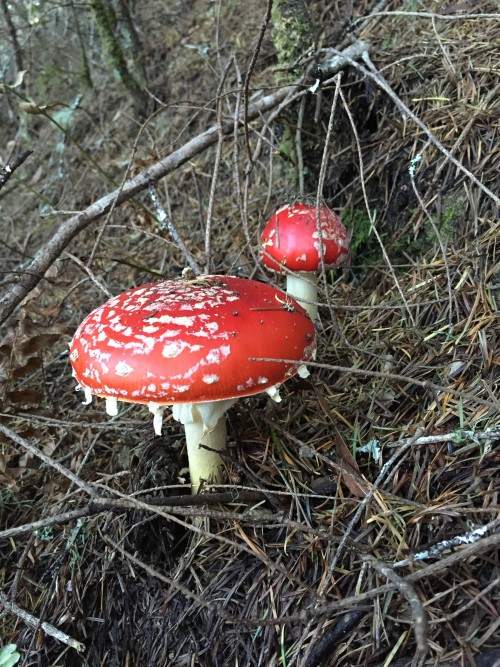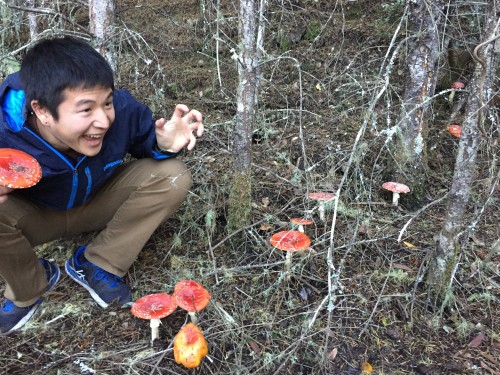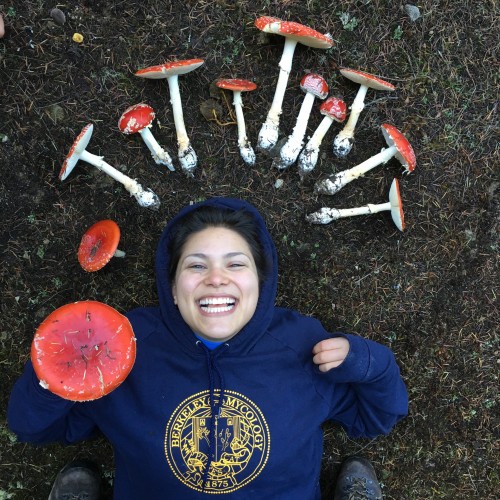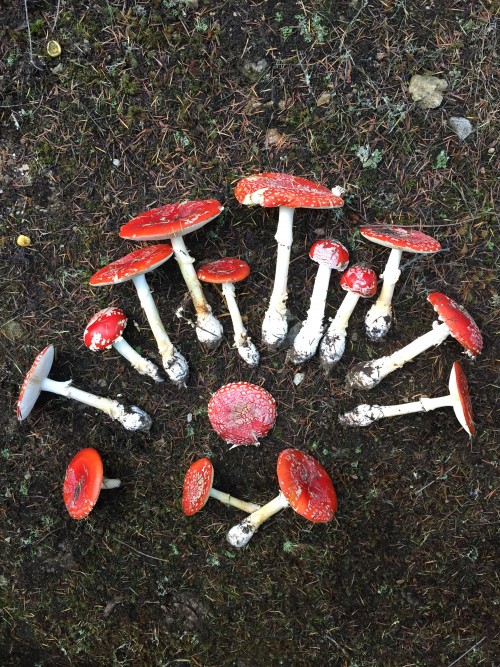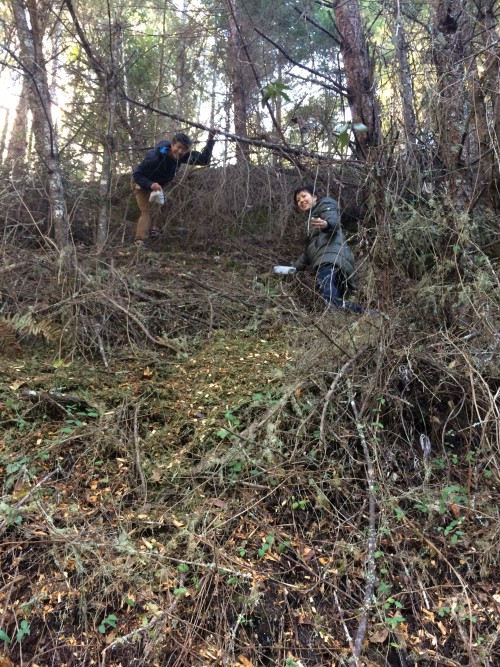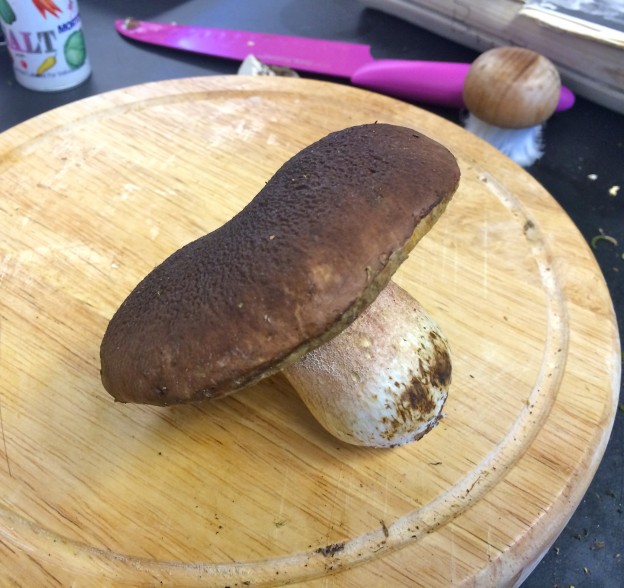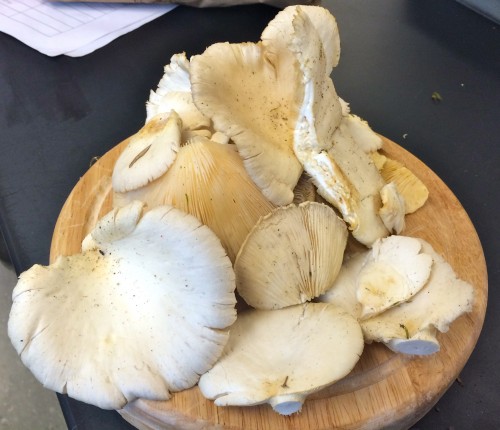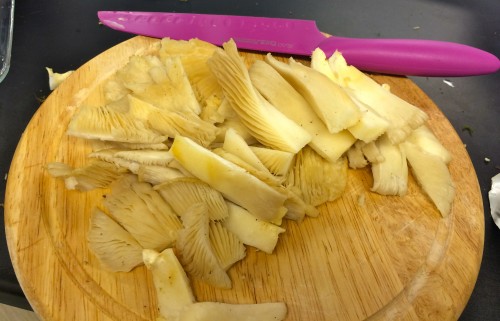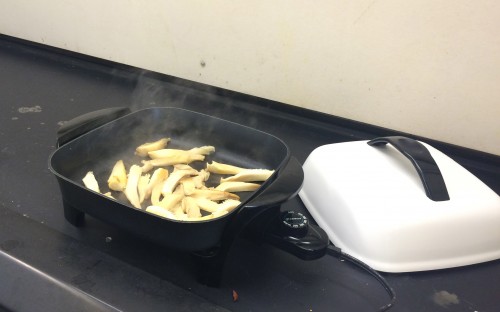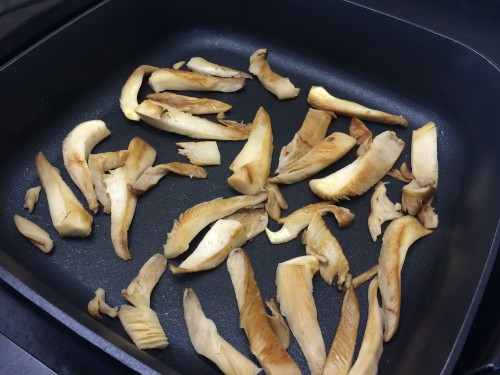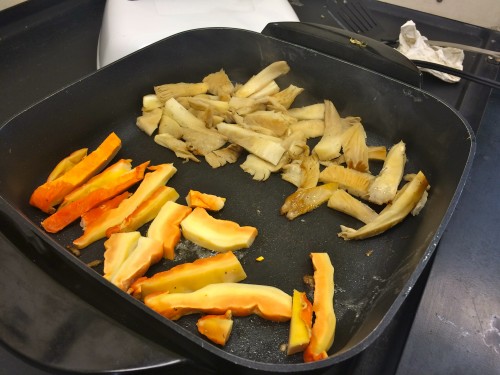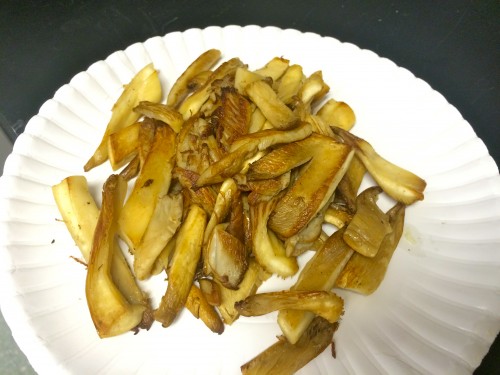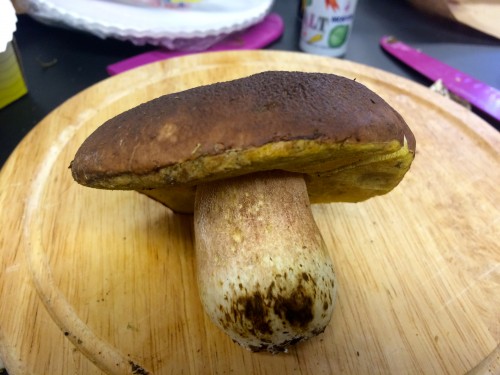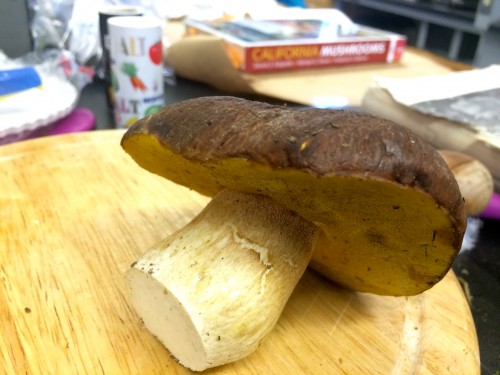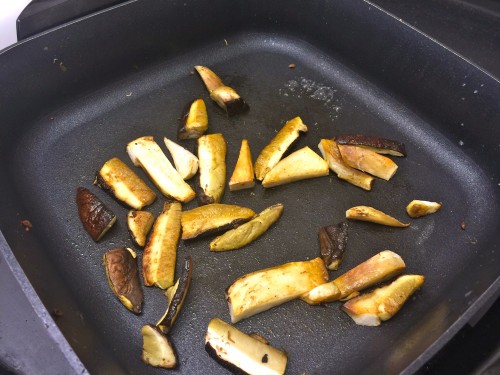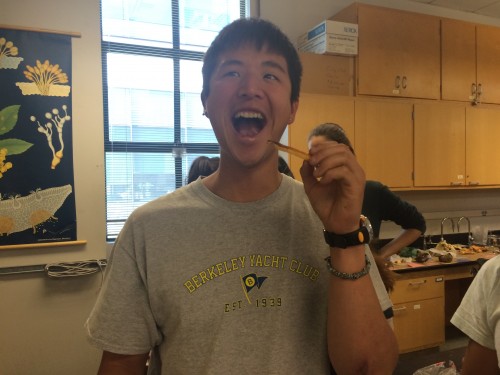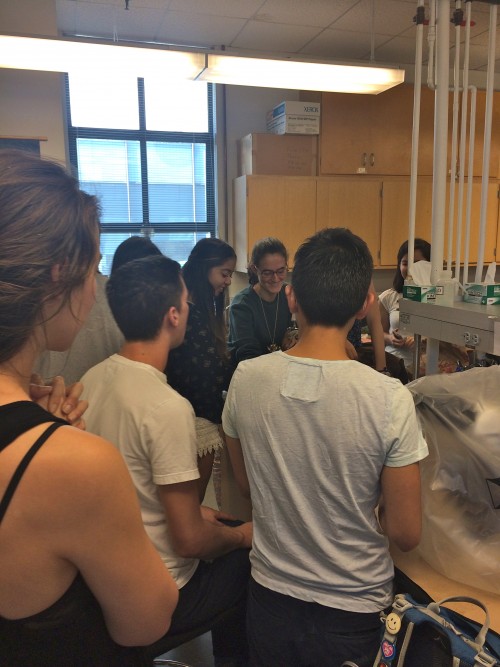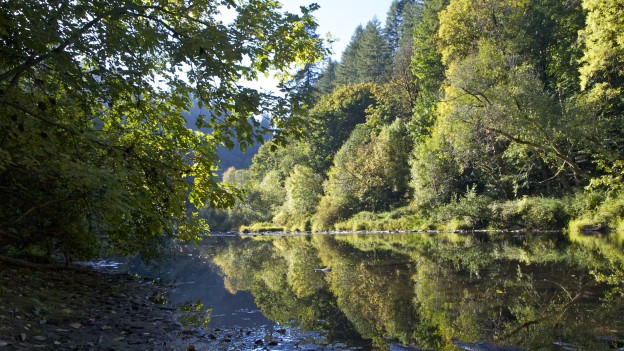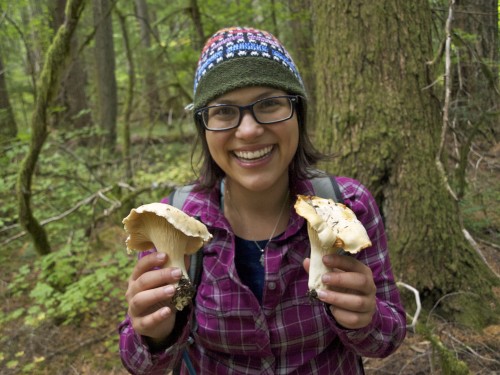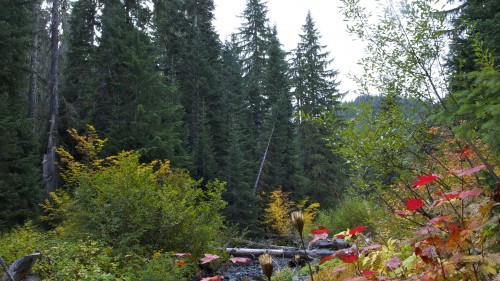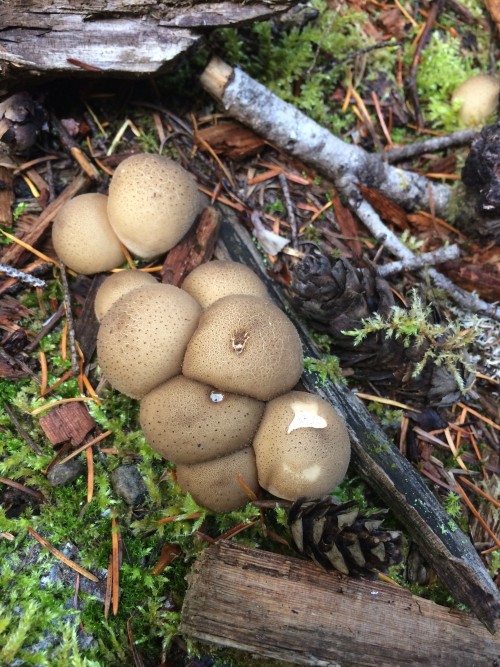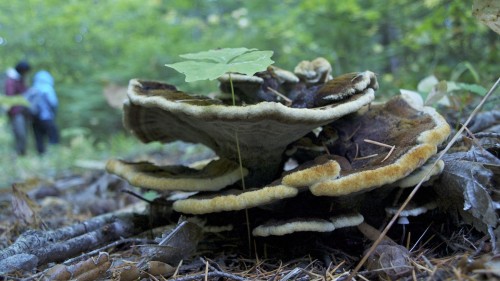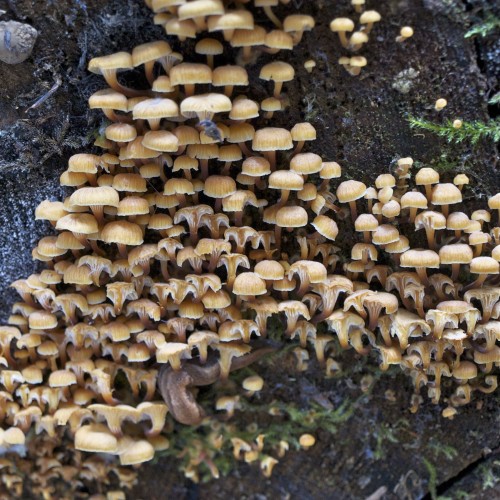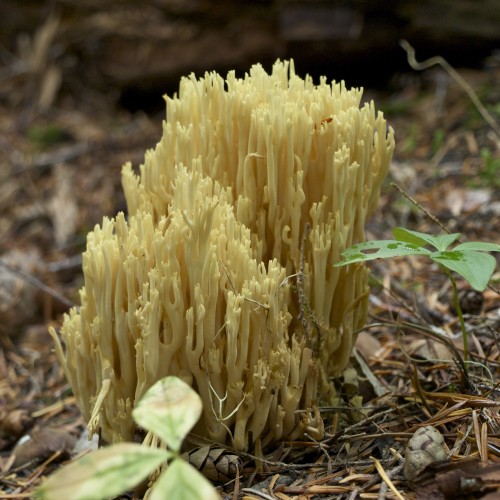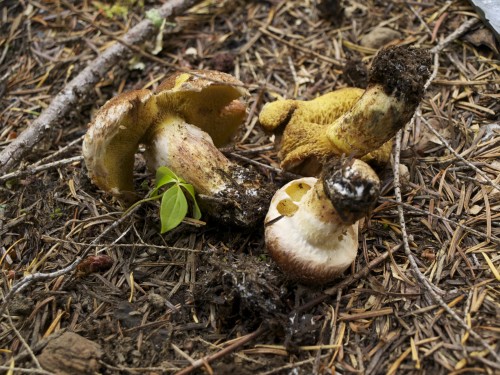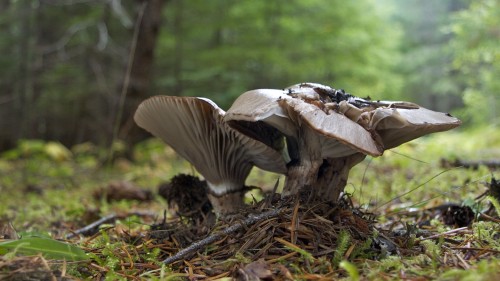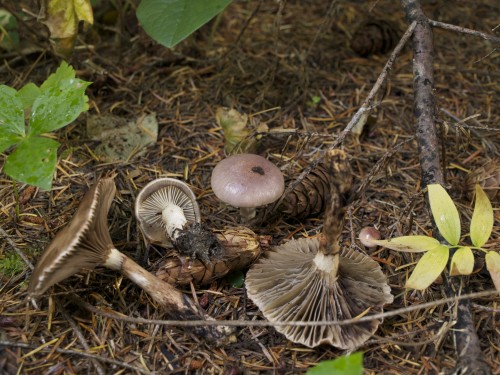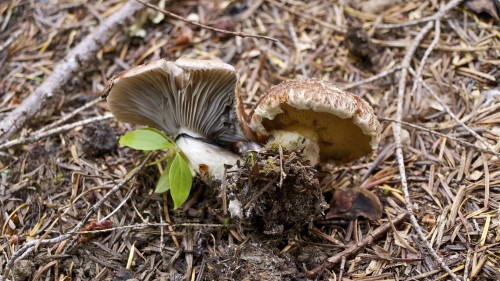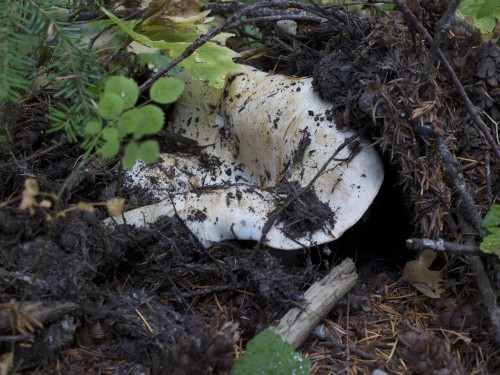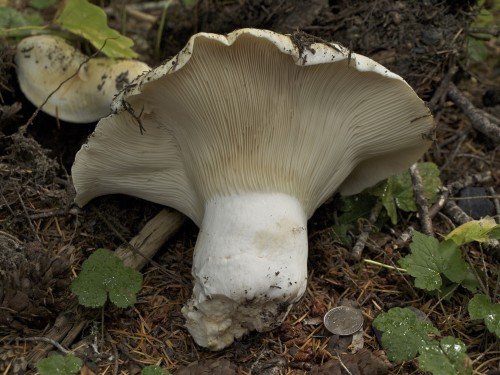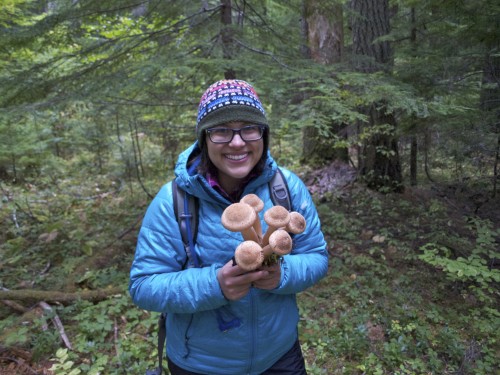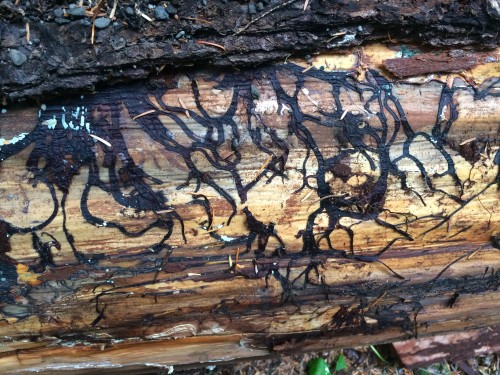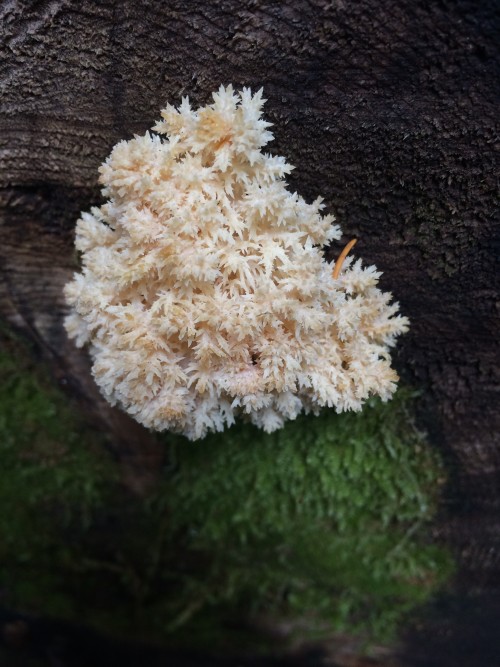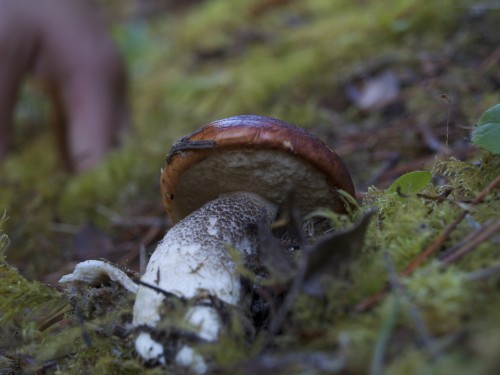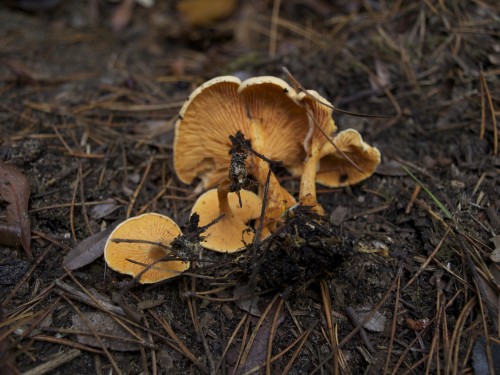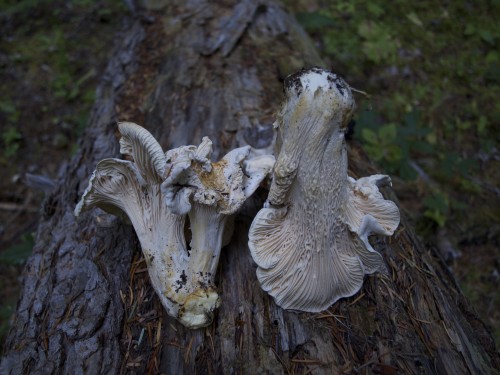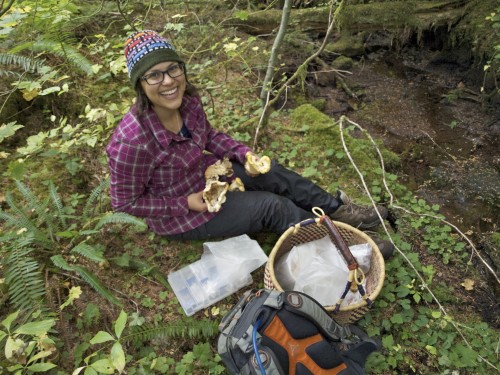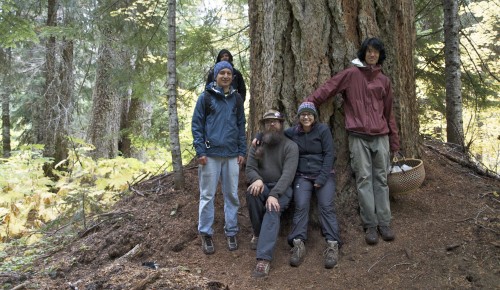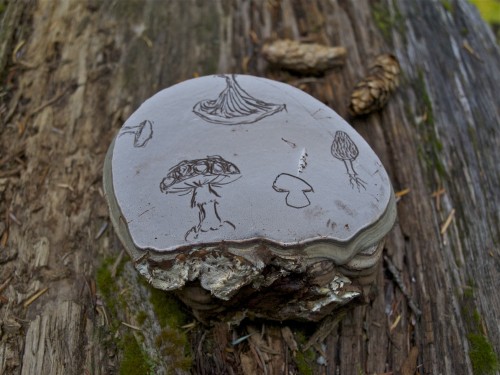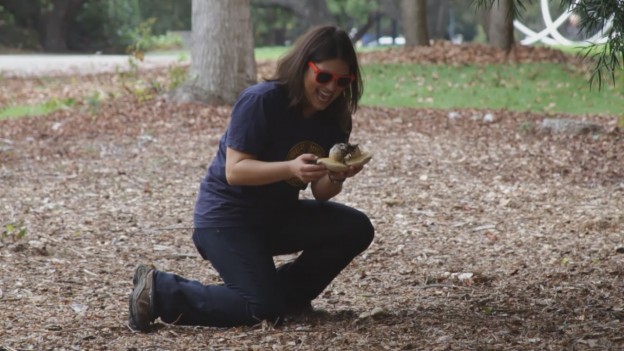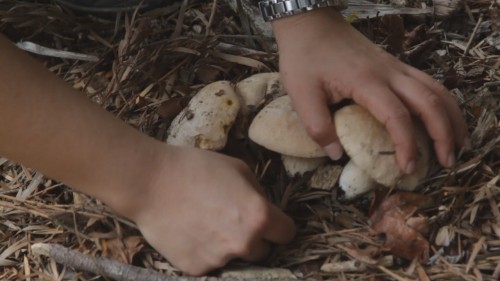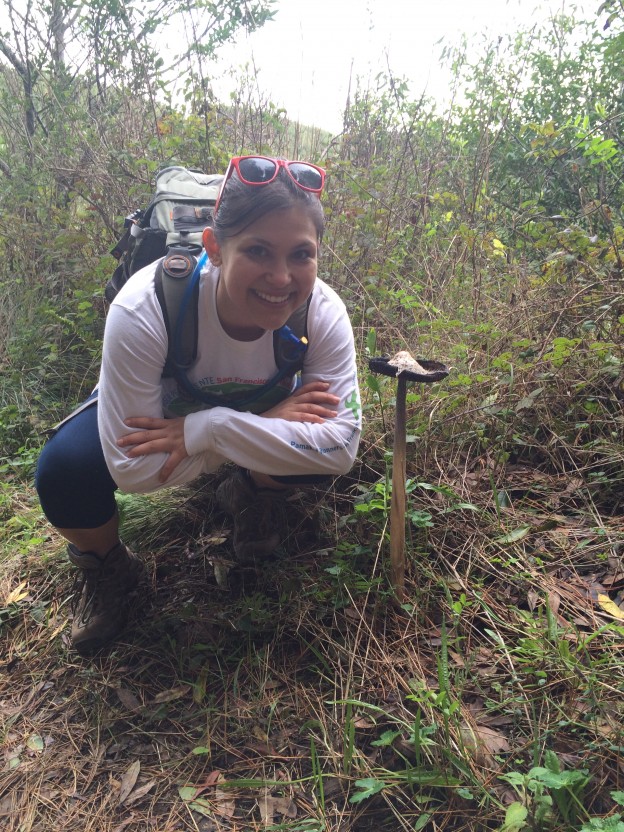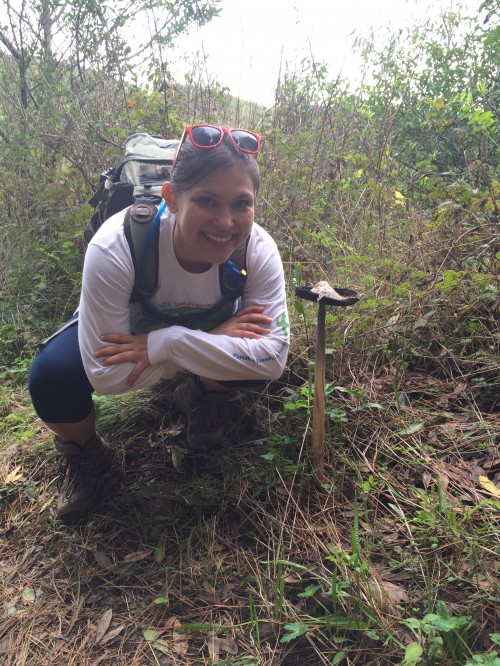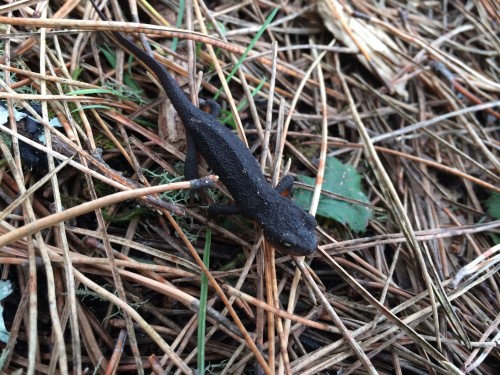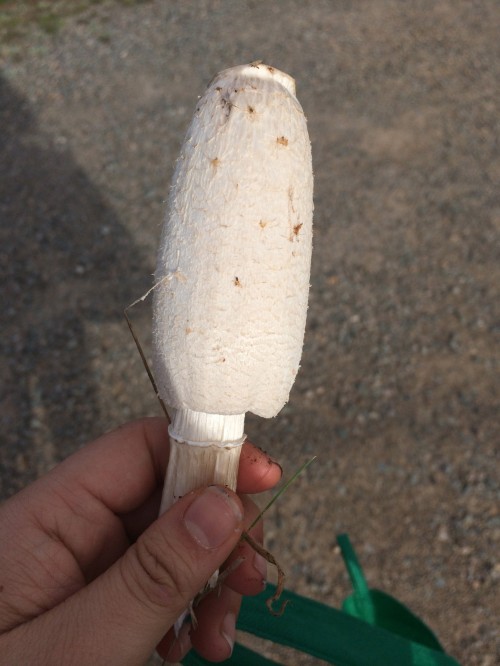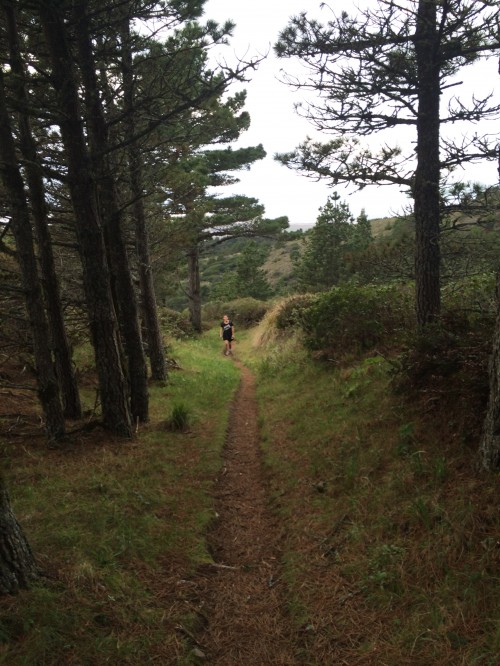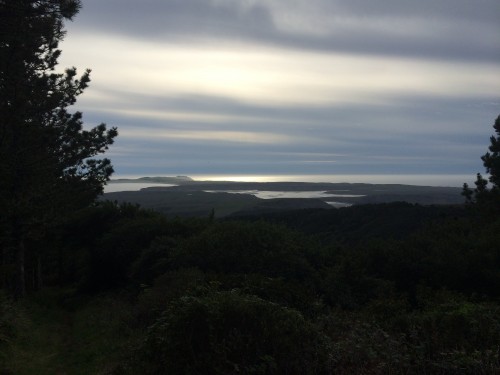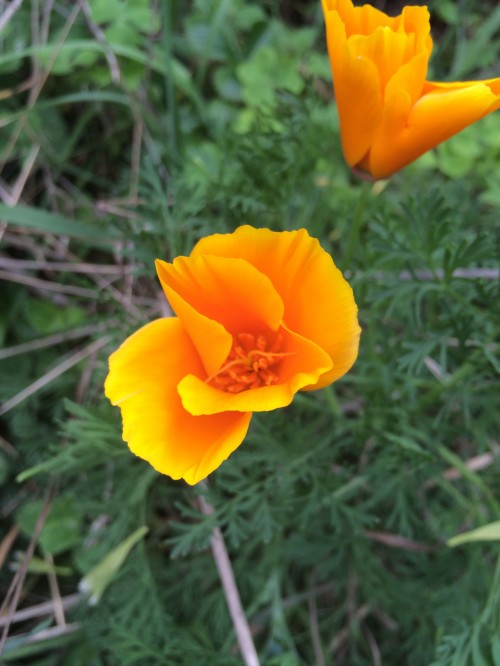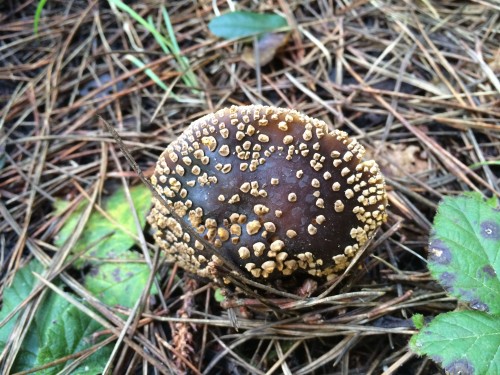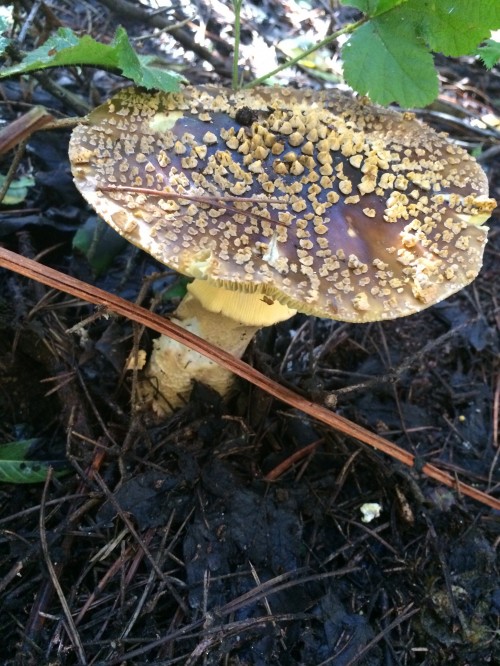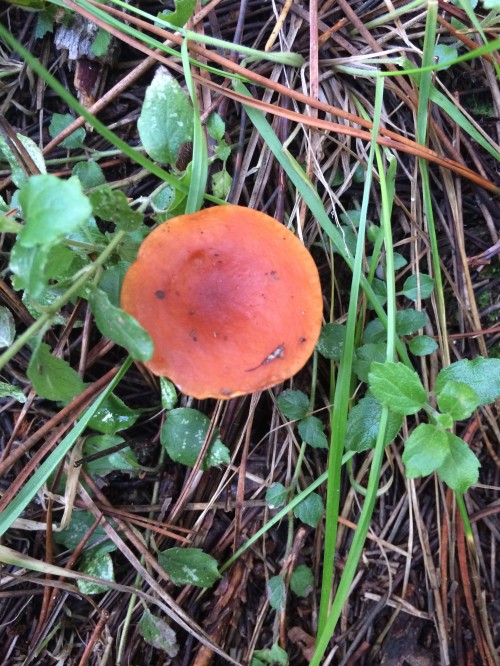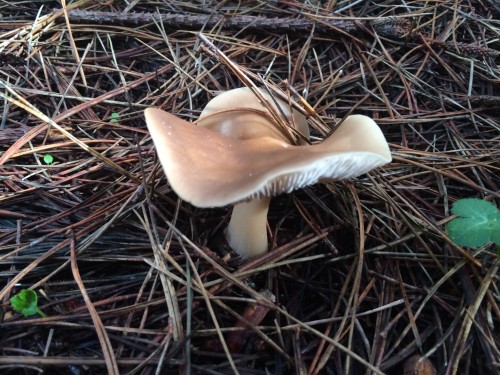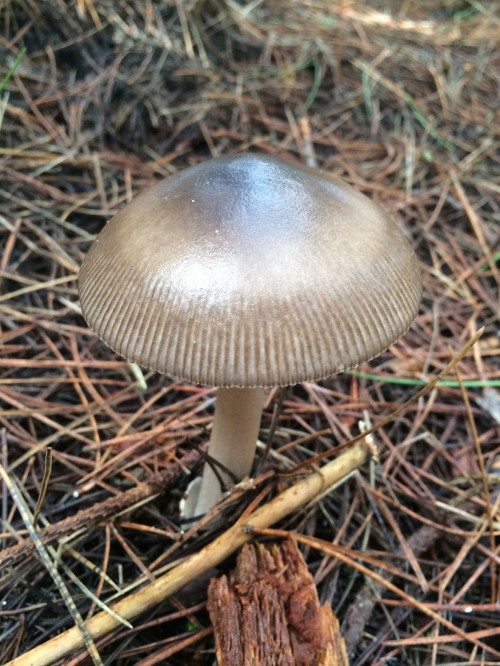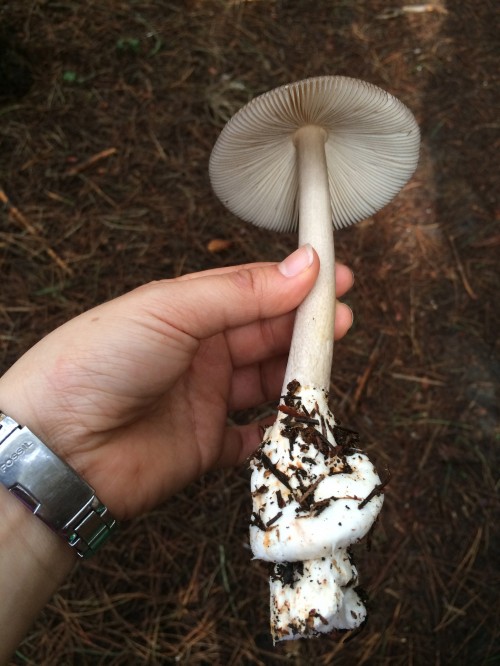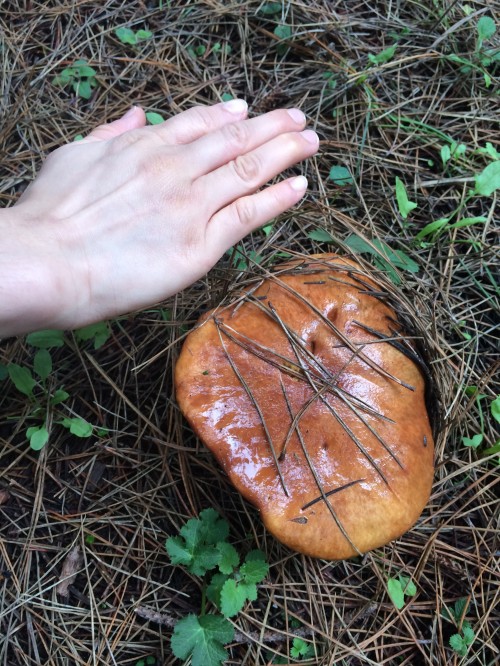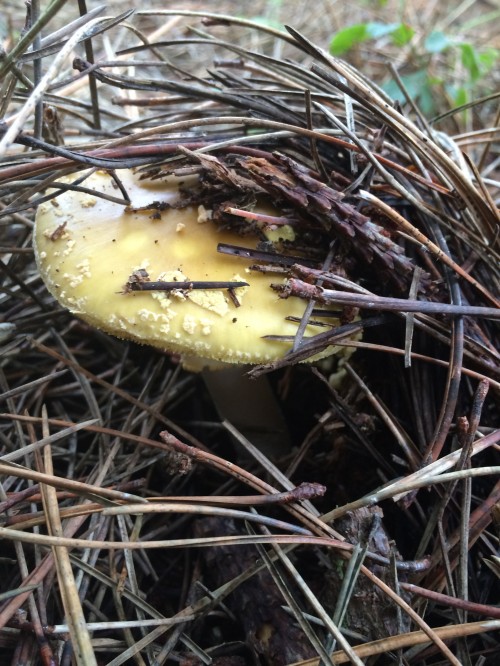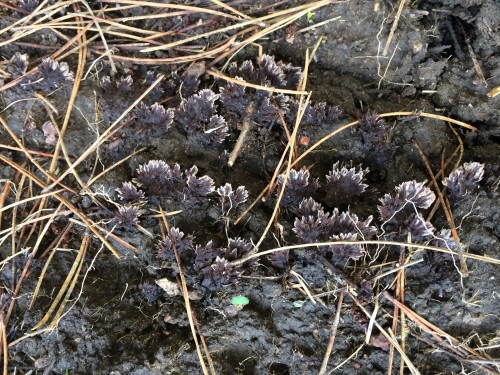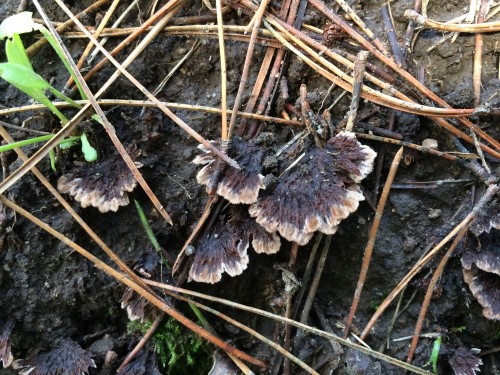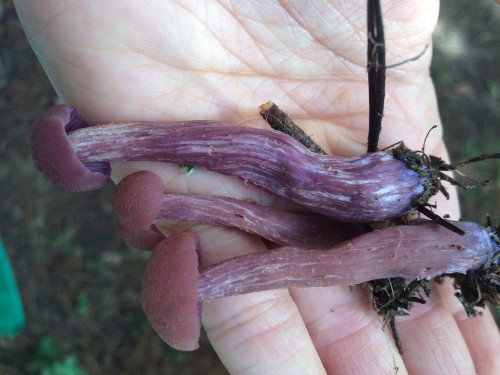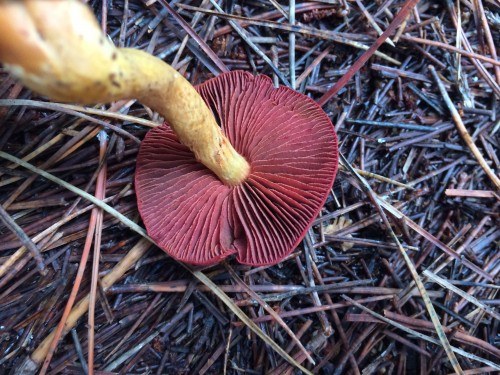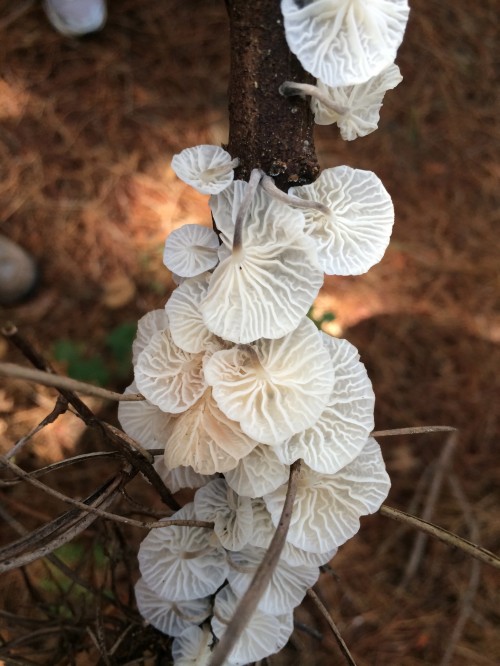Ever since I returned from New Zealand I’ve been hearing tales and seeing pictures of abundant morels popping up all over northern California. We had tons of wildfires in California in the last two years and are having a very rainy spring thanks to El Niño, which means a perfect storm for morels! Morels are known to pop up in recent burn scars, and since I just graduated with my PhD from UC Berkeley May 15, I finally had time to head to the mountains and poke around for these elusive earthen treats myself!
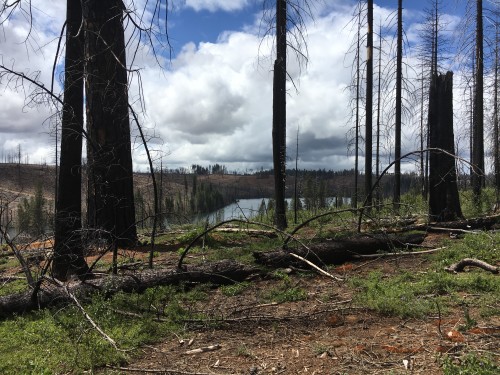
Burn scar from the King Fire
We headed up to the Sierra Nevada mountains in California to check out the burn scars from the giant King Fire that scorched over 97,000 acres of land two years ago. Spring in the Sierras is beautiful and we saw tons of dogwoods blooming.
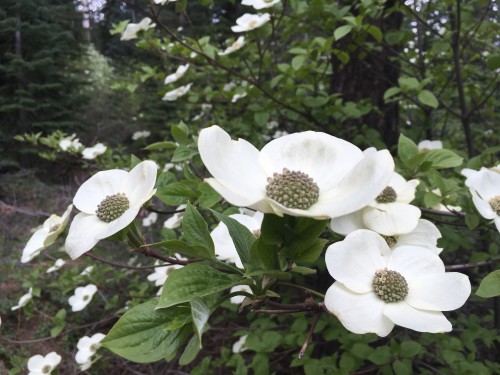
Dogwoods blooming
We knew we were onto something when we began to see the burned ground carpeted with these cute little orange cups, Geopyxis carbonaria, which are associated with wildfires.
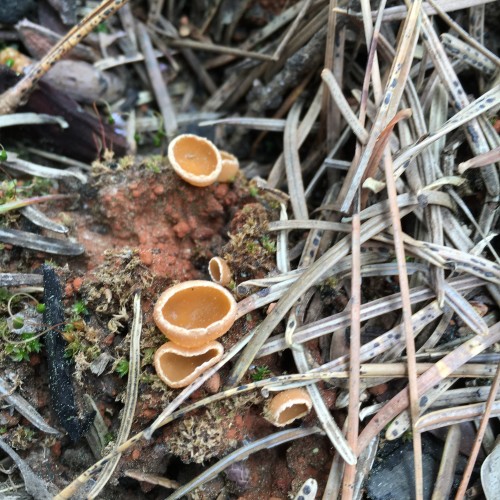
Cute orange cups of Geopyxis fruiting in the burned duff!
Morels are quite elusive, and it took us a while to find what we were looking for, but in the meantime we enjoyed our tromp through the beautiful Sierran conifer forests.
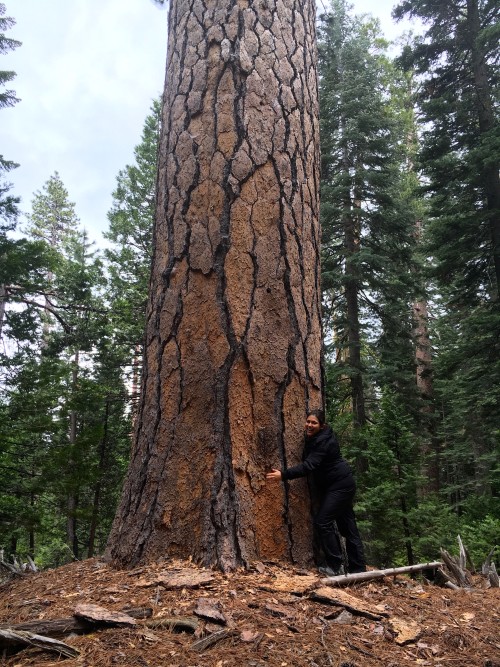
Posing with a giant Jeffrey pine
Before we could find any of the delicious elusive treats, we had to survive some infamous Sierran inclement weather first – it started to hail!
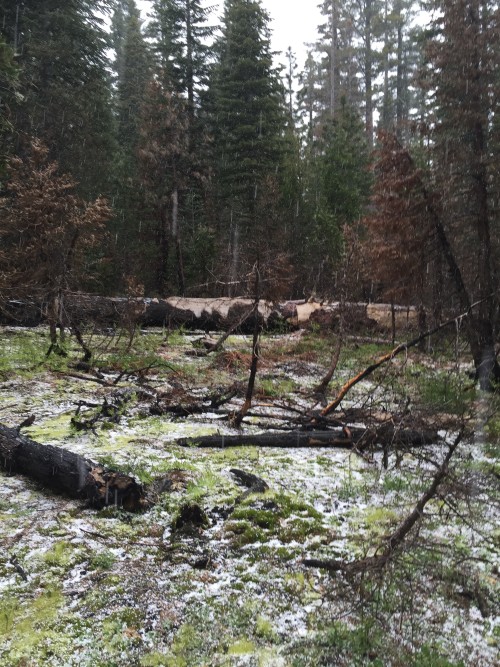
Hailing in the Sierran conifer forests
We were beginning to lose hope, and then finally Vince found the first morel of the day!
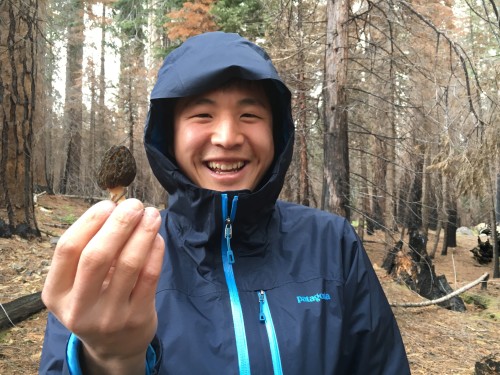
Vince grins with delight at the first morel of the day!
It cold and hailing, but that instantly melted away when I found my first morel – so much glee!
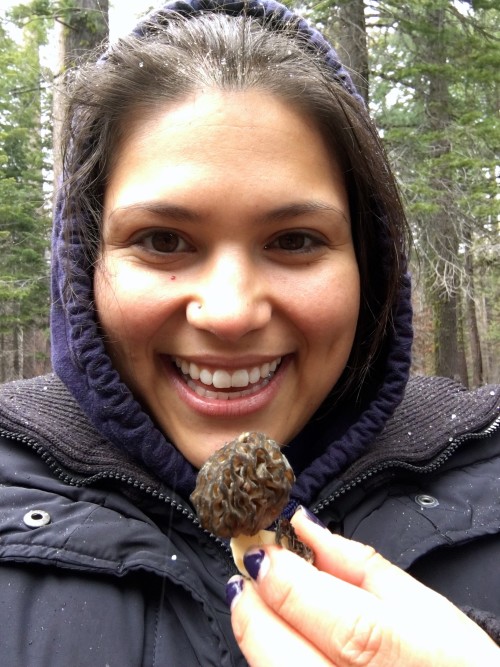
Me posing with my first ever California morel!
We were getting so much hail that we considered turning around and heading back to the car, but those thoughts quickly melted away after Brian found the mother lode!
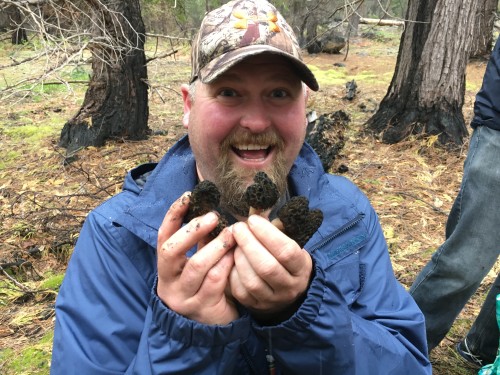
Brian posing with his morel finds!
We were all infected with the morel fever which kept us warm despite the continued hail.
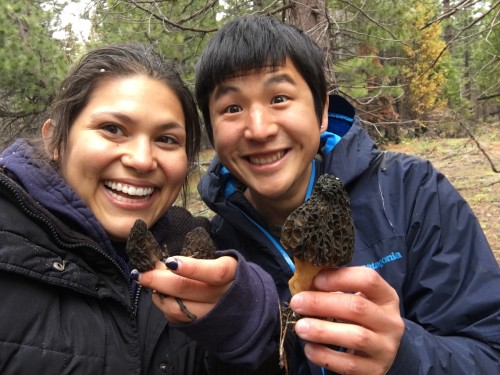
Hail in our hair and we don’t care! We got the crazy mushroom eyes!
At a certain point it began to hail so hard we decided it was indeed prudent to return to the car..
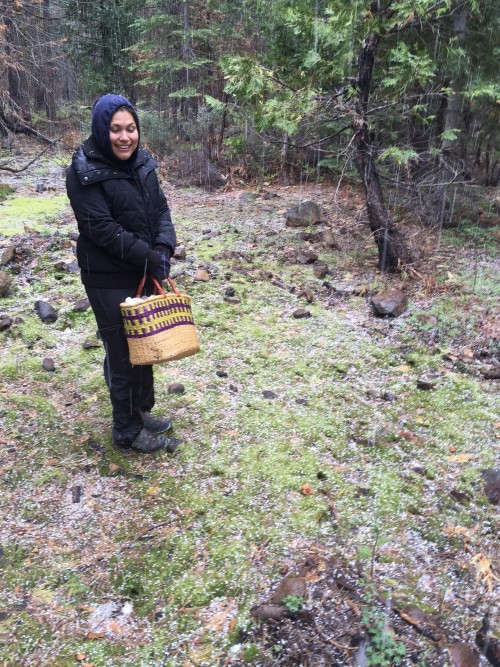
Shivering in the pouring hail
We still found some morels poking out from under the hail as we tromped back to the car!
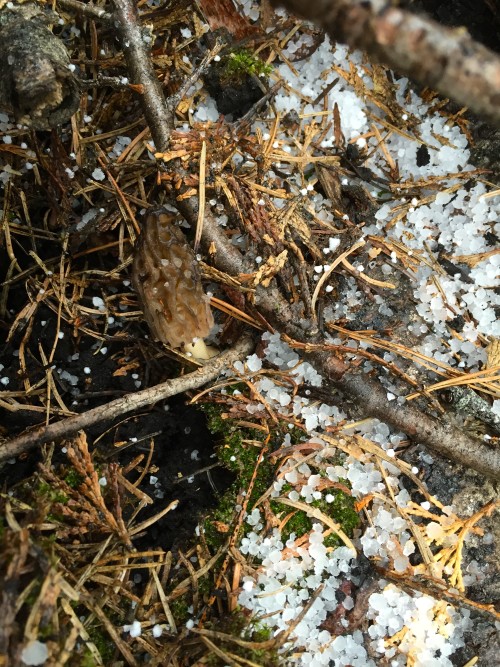
Can you see the morel poking out from under the hail?
At the end of the day, it was totally worth it!
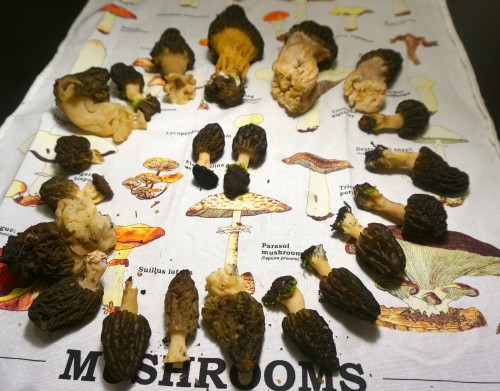
The morel catch of the day!
Flying high with the morel mushroom fever, we could not wait to prepare a feast to highlight our mushroom bounty. We made a quick stop at Berkeley Bowl on our way home from the mountains to gather ingredients. We decided to cook a creamy morel pasta served with salad, green beans, and fresh baked sourdough toasts (courtesy of Vince) topped with burrata cheese. After admiring our catch of the day, we set off to clean and cut the morels.
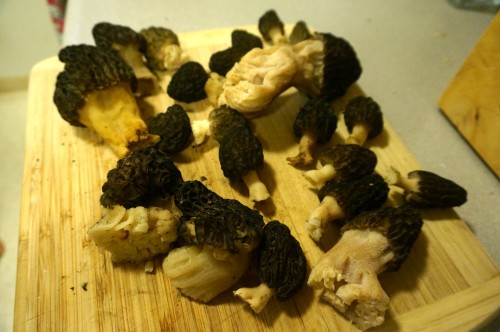
Morel bounty!
The first step was to cut and sauté the morels in butter.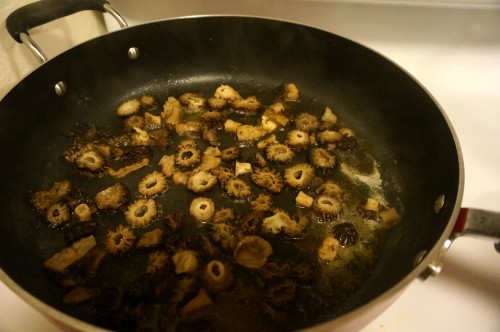
In the meanwhile, chef Vince prepared the green beans. I just love the morels on his t-shirt peeking out from behind the cupcake apron! It’s a good look, don’t you agree?
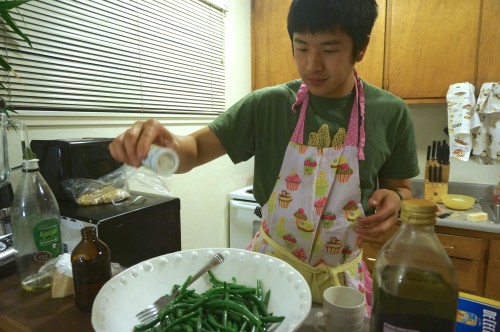
My sister and brother-in-law, who are big board game fans, gave me this Morel board game as a gift. The premise is that you are walking through the forest, hunting for morels. We thought it was a perfect activity for fellow hunters Brian and Alex to do while Vince and I prepared the pasta. Here they are deeply involved in the game sitting with the salad, green beans, toast with burrata, and cherries that we got to accompany the creamy morel pasta.
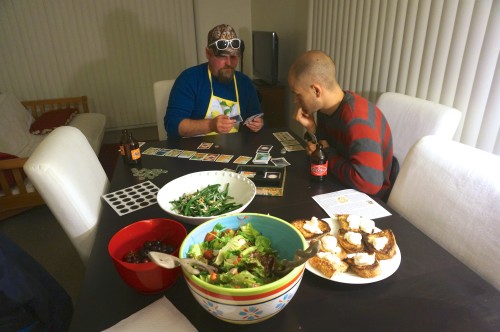
Can’t get enough of hunting for morels! Playing the Morel board game while the morels cook
The next step of the pasta after cooking the morels to golden brown perfection is to chop up two shallots and plenty of garlic and sauté them in butter until they also turn golden brown.
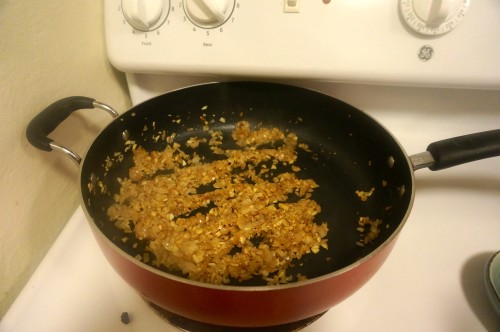
After the shallots and garlic are cooked, add in the heavy cream, then the mushrooms. The mushrooms permeate the cream with their flavor and it is sooo good!
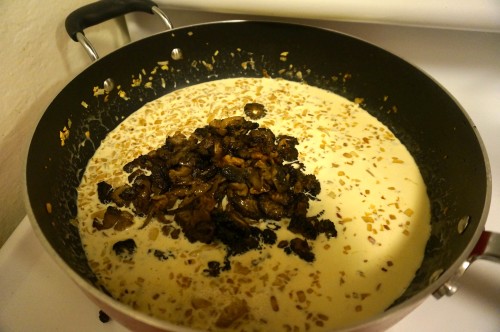
While the mushrooms marinate in the cream, onions, and garlic, cook the pasta and grate the parmesan cheese. Once the pasta is cooked, mix it in with the creamy mushroom sauce.
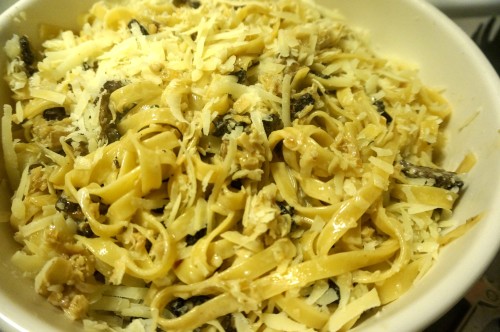
Creamy morel pasta with shallots, garlic, cream, and morels
Next, add more parmesan to the pasta!

Adding way more parmesan to the pasta
Thanks to my fellow hunters for helping me find this awesome morel bounty!
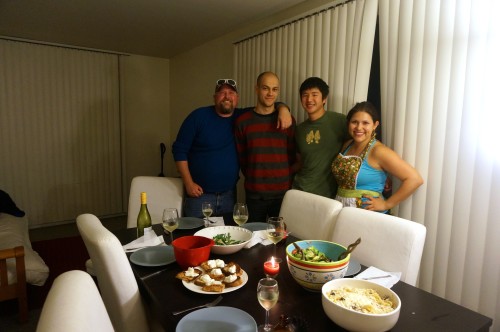
Cheers to my fellow hunters – Brian, Alex, and Vince – about to enjoy the morel mushroom feast!
Cheers to morels and friends!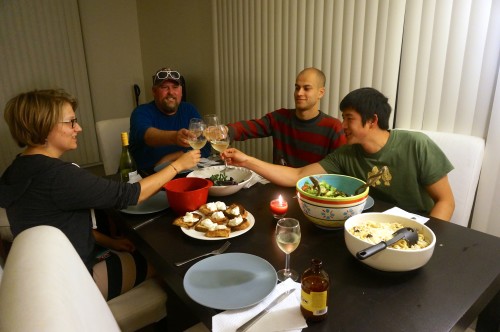
The salad and green beans complemented the creamy morel pasta perfectly. It was definitely a meal to remember! Now let’s go hunt for some more morels!!!
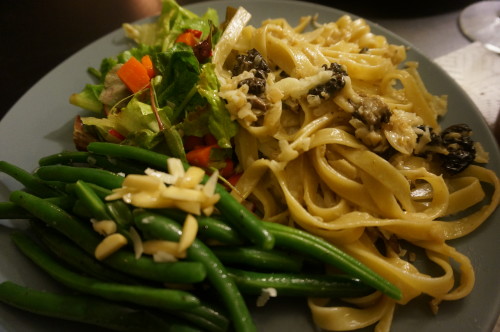
Salad, green beans with slivered almonds, and creamy morel pasta!
Ingredients for creamy morel pasta:
- Morels
- fettucine pasta
- heavy cream
- salt and pepper, to taste
- two shallots
- lots of garlic! to taste
- parmesan cheese

